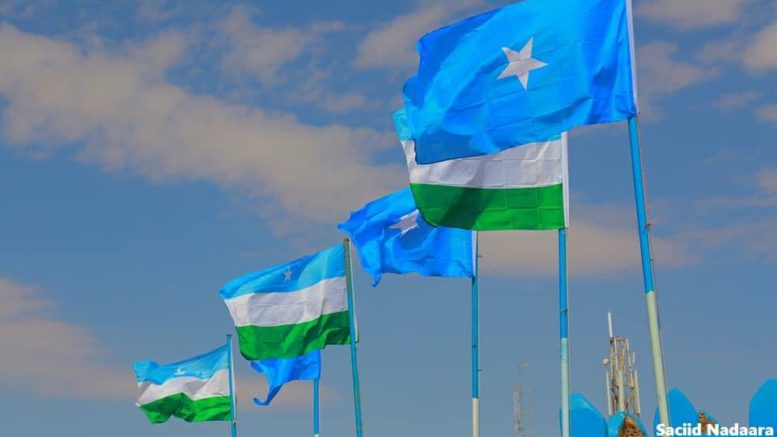Report on the Situation of Somali Agriculture: Mismanagement, Funding Issues, and the Need for Reform
⸻
Introduction
Agriculture is a central component of Somalia’s economy and plays a vital role in the livelihood of its population. Despite significantinternational financial support, the agricultural sector faces severechallenges. Drought, floods, outdated farming methods, and widespread corruption are key factors preventing Somali farmersfrom successfully marketing their products. Particularly alarming is the misuse of international aid funds, which were intended to modernize agriculture but have often been misappropriated.
⸻
1. The Importance of Agriculture in Somalia
Agriculture is the backbone of Somalia’s economy and its primarysource of income for the population:
•Contribution to GDP: Agriculture accounts for over 70% of the country’s Gross Domestic Product (GDP).
•Employment: Approximately 80% of the population is employed in agriculture.
•Exports: Over 50% of Somalia’s exports come from agricultural products, particularly livestock.
Despite its importance, Somalia’s agriculture sector remainsinefficient and suffers from structural deficits.
⸻
2. International Aid Programs and Mismanagement
To address these challenges, numerous international organizations have providedsubstantial financial support. However, instead of helpingfarmers, these funds are oftenmisappropriated, usedinefficiently, or diverted into the pockets of corrupt officials.
a) EU Funding Programs
The European Union (EU) has made significant efforts to support Somali agriculture:
•Through the KobciyeProject, the EU has supported 3,000 farmers in Puntland, Jubaland, and Galmudug. This initiative included the provisionof tractors, solar-powered water pumps, and fences to improvecrop security.
•Another EU-fundedproject with a budget of €2 million provides technical assistance to Somalia’s agricultural ministries, strengthening modern value chains.
Despite these efforts, many aid funds have not been effectivelyutilized. Corruption and inefficiencies continue to hinderprogress.
b) USAID Initiatives
The United States Agency for International Development (USAID) invested over $369 million in Somalia in 2021 alone. These fundswere intended to support food security, sanitation, and assistancefor internally displaced persons.
While some funds were directedtoward agricultural development, widespread corruption and pooroversight limited their impact.
c) African Union and Arab League Contributions
The African Union (AU) and the Arab League have also invested in Somalia’s agricultural sector:
•The AU, through the African Union Transition Mission in Somalia (ATMIS), allocatedsignificant resources to promote stability and agriculturaldevelopment.
•The Arab League has provided political and humanitarian support to Somalia, but concrete figures regardingagricultural investment remainless transparent.
Despite these international efforts, the conditions for Somali farmers remain critical.
⸻
3. Outdated Farming Methods and Lack of Innovation
Another major problem is the outdated agricultural system. Many farmers still rely on techniques that have remainedunchanged for decades, significantly reducing their productivity.
•There is a severe lack of modern machinery, improvedseed varieties, and efficientirrigation systems.
•Farmers often lack knowledge about climate-resilient and sustainable farmingtechniques that could reducecrop losses.
Despite the availability of funding, the failure to implementmodern practices has severelyhindered progress.
⸻
4. Failures of the Somali Government
The Somali government bearssignificant responsibility for theseongoing issues:
•Mismanagement of Aid Funds: Funds intended to support farmers are oftenmisappropriated or fail to reachtheir intended beneficiaries.
•Lack of Infrastructure Investment: Roads, transportsystems, and storage facilitiesremain poorly developed, making it difficult for farmers to access markets.
•Tolerance of Corruption: Rather than taking action againstcorrupt officials who imposeillegal fees on farmers, this behavior is often overlooked or even condoned.
⸻
5. Recommendations and Solutions
To improve the situation of Somali agriculture, the following measuresare urgently needed:
a) Transparency and Accountability
•The Somali governmentshould establish an independent oversight body to monitor the use of international aid funds.
•Authorities must ensurefull transparency and public reporting on the allocation of these resources.
b) Modernizing Agriculture
•Investment in modern machinery, climate-resistantseeds, and efficient irrigationsystems is crucial.
•Training programs shouldeducate farmers on modern techniques and sustainableagricultural practices.
c) Infrastructure Development
•Investment in road construction, warehouses, and transport networks is essential to improve farmers’ access to markets.
•The establishment of regional collection points couldhelp farmers consolidate their products and improve efficiency.
d) Combating Corruption
•The government must take strict action against corruptofficials imposing illegal fees on farmers.
•Implementing digital payment systems could help minimize corruption and ensuretransparent transactions.
⸻
6. Conclusion
Despite substantial international support, Somalia’s agriculturalsector remains in a precariousstate. International fundingintended to modernize the sectorand improve farmers’ livelihoods is often misused or mismanaged.
The Somali government must take responsibility by combatingcorruption, improvinginfrastructure, and investing in agricultural modernization. Without decisive action, the cycle of hunger, poverty, and economic insecurity will continue to threatenthe lives of Somali farmers.
Furthermore, the international donor community must strengthenoversight mechanisms to ensurethat financial resources reachthose who need them most — the Somali farmers themselves.
A swift and targeted response is essential before further resources are wasted and the livelihoods of Somali farmers face even greaterrisks.
By Abdi Fidow
Discover more from Idil News
Subscribe to get the latest posts sent to your email.


